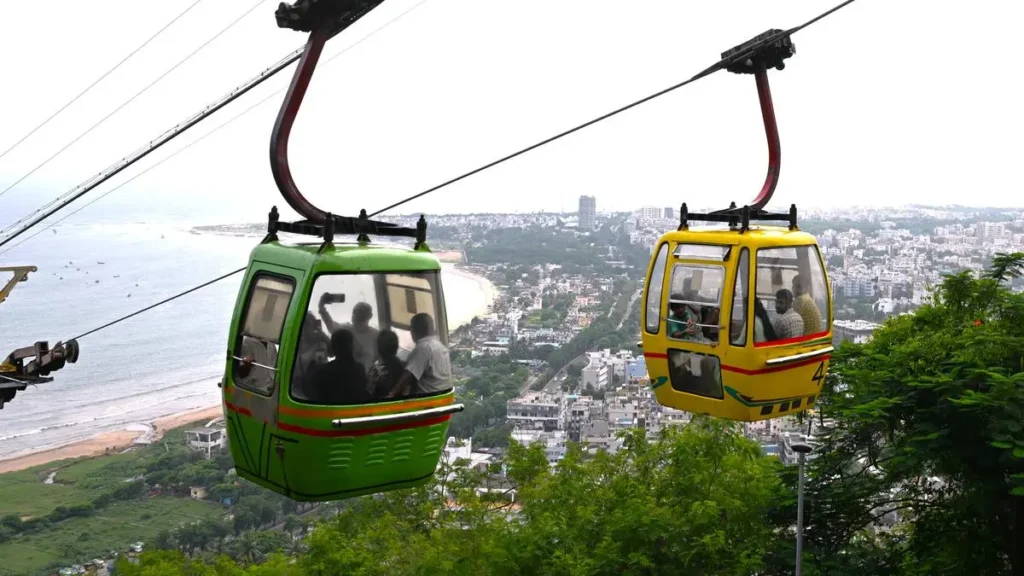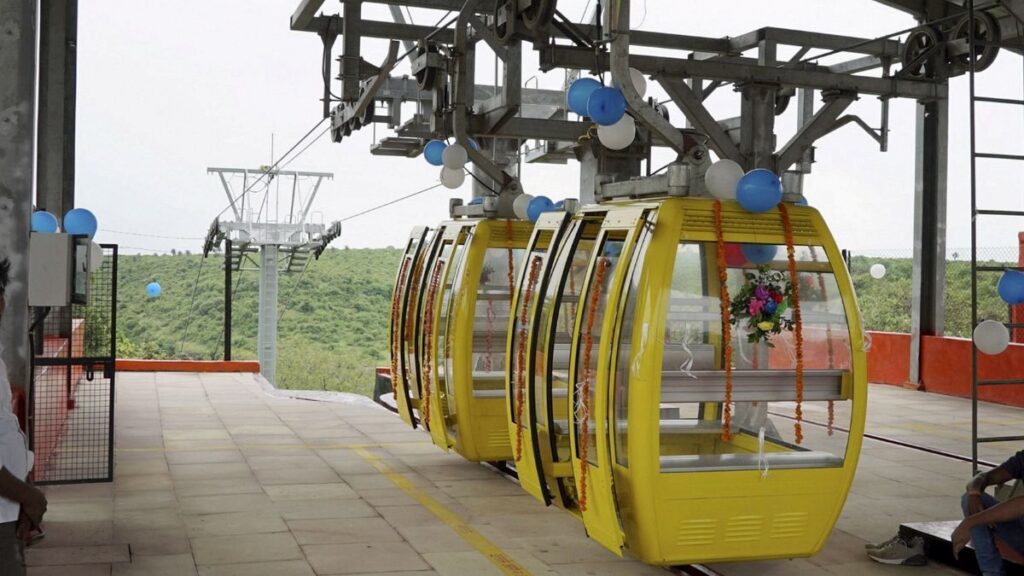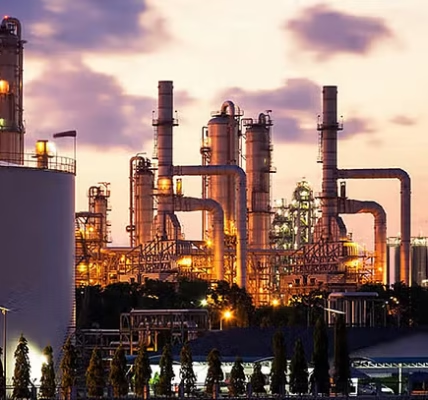Known as the spiritual heart of the country of India, Varanasi is one of the most ancient cities in the entire world to have been continually maintained. It is well known for its temples, ghats, rich culture and long history. Its restricted alleys, the large number of pilgrims, visitors and local travelers, nonetheless have made daily life difficult in recent years due to congestion in the traffic. The first public transportation ropeway system in India was introduced in Varanasi by the Uttar Pradesh and Central governments as an innovative measure to address this issue.
By creating a cutting edge, environmentally responsible and effective method of public transit, this innovative concept seeks to revolutionize how people move across the historic city.
In addition to reducing traffic, it aims to establish Varanasi as a smart city with ecologically sound infrastructure, striking a balance between cultural preservation and cutting edge urban mobility.
What is the Urban Ropeway Transport in Varanasi?
An innovative attempt to implement an aerial ropeway for urban transportation is the Varanasi Ropeway Project. This ropeway will function as a daily public transportation system, in contrast to the typical ropeways utilized in hill areas for tourism. It will offer an alternative to road based transportation through linking key locations throughout the city.
From Varanasi Town Railway Station to Godowlia Chowk, one of the largest locations close to the Kashi Vishwanath Temple, the ropeway is intended to travel 3.75 miles.
Key Features of the Varanasi Ropeway Project
1. Route & Length:
- Total stretch: 3.75 km
- Route: Varanasi Cantonment Railway Station → Kashi Vidyapith → Rath Yatra → Godowlia Chowk
2. Stations:
- Four stations in the first phase: Cantonment, Kashi Vidyapith, Rath Yatra and Godowlia.
3. Capacity:
- Around 96 cable cars will operate.
- Each cabin can carry 8–10 passengers.
4. Travel Time:
- 15 minutes is the estimated journey time (60 to 90 minutes at high traffic).
5. Technology:
- Built with mono cable detachable gondola (MDG) technology.
- Advanced safety measures, AI-based monitoring and continuous power backup.
6. Project Cost:
- Estimated cost: ₹645 crore (approx.).
7. Capacity for Daily Passengers:
- Can carry around 96,000 passengers per day.
Why is the Ropeway Needed in Varanasi?

On any given day, more than one lakh people visit Varanasi, including tourists, traders, students and worshipers. The transit of rescue helicopters is frequently postponed because roads are small and traffic jams are common. The following are some main justifications for the ropeway’s necessity:
- Road traffic strain in crowded places is reduced by traffic congestion relief.
- Tourism Growth: Easy transportation for the thousands of thousands of pilgrims who visit the Ganga Ghats and Kashi Vishwanath Temple.
- Environmentally friendly: Lessens reliance on gasoline and diesel cars, reducing emissions.
- India’s Smart Metropolis Mission is in line with the Smart City Vision.
- Locals, students and visitors all save time with faster connectivity.
Benefits of the Urban Ropeway Transport
1. For Commuters Every Day
- Flying above traffic bottlenecks and road congestion saves a significant amount of trip time.
- Generally speaking, prices are lower than those of taxis or autorickshaws.
2. For Pilgrims and Tourists
- Provide an easy way to visit temples, ghats, and other vacation or pilgrimage destinations.
- Enhances the vacation pleasure by offering distinctive aerial views of the city.
3. Regarding the Environment
- Utilizing electricity and potentially renewable resources, it contributes to reducing carbon emissions.
- Encourages environmentally friendly, sustainable transportation with less pollution and less land impact.
4. Regarding the Economy
- Increases the number of pilgrims and tourists, which benefits nearby companies.
- Creates jobs during the phases of building, operation and maintenance.
Challenges of the Ropeway Project
Considering its many benefits, there are a number of important obstacles to overcome when putting an urban ropeway into place:
- Heavy Initial Cost: Ropeways are costly to build and repair.
- Environment Dependency: Storms, thunder and lightning and severe rains can all have an impact on operations.
- Public adaptability: Residents must become used to a new form of transportation.
- Urban Infrastructure: It takes careful design to incorporate stations into a crowded urban environment.
Urban Ropeway vs. Traditional Transport

| Factor | Ropeway Transport | Road Transport (Bus/Auto) |
| Travel Time | 15 minutes | 60-90 minutes |
| Pollution | Zero emission | High (diesel/petrol use) |
| Cost (per km) | Affordable | Varies |
| Traffic Impact | Flys over roads | Affected by congestion |
| Passenger Experience | Scenic, smooth | Crowded, stressful |
Future Scope of Ropeway Transport in India
Along with being to being a local endeavor, the Varanasi Ropeway is a prototype which might serve as an example and motivation for comparable efforts within other overcrowded Indian cities, such as Delhi, Mumbai, Jaipur and Lucknow. If effective, ropeways may eventually become a common urban transportation option in India.
Under the “Parvatmala Pariyojana,” or National Ropeways Development Programme, the Indian government had previously suggested ropeways.





